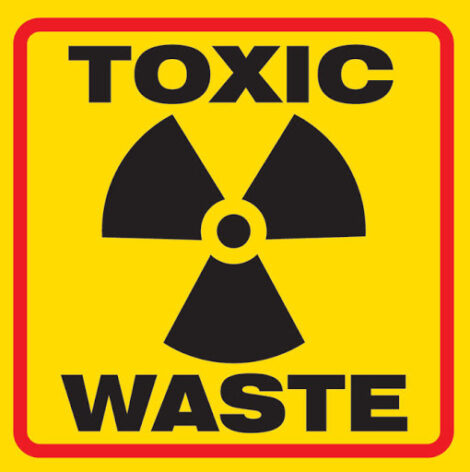For this month’s article, I’ve asked R. Scott Powell, Senior Engineer at EnviroForensics, to give us an important update on the government’s regulation of chemicals for industry. Scott advises many of our manufacturing clients regarding these issues, and this development is directly applicable to drycleaners. The use of chlorinated chemicals continues to get the squeeze from the Feds, further indicating that their widespread use could possibly have a sunset in the future.
The U.S. Environmental Protection Agency (U.S. EPA) is currently assessing additional restrictions to the most common chemicals in the drycleaning industry, perchloroethylene or Perc (PCE) and trichloroethylene (TCE). We understand that most of our clients store and use PCE and TCE in their daily operations, so when the U.S. EPA sends out notices that they will be evaluating the health risks of these chemical under Toxic Substance Control Act (TSCA), we pay special attention.
TSCA has been used in the past to ban some chemicals and significantly restrict others. The outcome of the U.S. EPA’s assessment in the next two years could significantly change the production, storage, transport, use and disposal of cleaning and spotting products that contain PCE and TCE. These changes could also significantly affect the cost and management of contaminated soil and groundwater associated with environmental cleanups of solvent releases.
TSCA was initially established in 1976 as the nation’s primary chemicals management law and provided the U.S. EPA with authority to require reporting, record-keeping, testing and restrictions of specific chemical substances that were determined to pose a risk to human health or the environment.
The most recent TSCA amendment in June 2016 required the identification and assessment of high-priority chemicals. The chemical risk assessment process consists of three steps: 1) prioritization; 2) risk evaluation; and 3) risk management. In December 2016, the U.S. EPA identified PCE and TCE as part of the first 10 high-priority chemicals for review under the 2016 TSCA amendment. The U.S. EPA released the final Risk Evaluation for Trichloroethylene (TCE Risk Report) in November 2020 and the final Risk Evaluation for Perchloroethylene (Ethene, 1,1,2,2-Tetrachloro-) (PCE Risk Report) on December 20, 2020.
The health risks identified in the PCE Risk Report and TCE Risk Report included acute exposures (neurotoxicity) and chronic exposures (neurotoxicity, kidney, liver, immune system and developmental effects and liver cancer). In general, the conditions of use included: manufacturing, import, processing, repackaging, recycling, degreasing, lubricants, adhesives, paints, coatings, automotive care products, metal and stone polishes, welding, textile processing, furniture manufacturing, foundry application and various drycleaning-related uses.
The U.S. EPA is currently assessing an applicable and appropriate risk management approach for both compounds. The U.S. EPA’s next step will be to initiate risk management actions for these identified conditions of use to reduce or eliminate the risks. The U.S. EPA risk management process will include consultations with stakeholders in environmental justice, small business and state and local governments. The Environmental Justice Consultations for PCE and TCE are scheduled in June and July 2021. The Environmental Justice Consultations is an opportunity for environmental justice stakeholders to express their concerns on the risks associated with PCE and TCE. The U.S. EPA will have additional consultations with small business and state and local governments in the future. These future consultations will allow small business and governmental representatives opportunities to express their own concerns with the business risks associated with the potential restrictions on PCE and TCE, in addition to requesting and suggesting alternatives in chemical management as an alternative to banning their use.
TSCA has been used to limit or eliminate the production, importation, use and disposal of more than 83,000 chemicals, including polychlorinated biphenyls (PCBs), radon, asbestos, various solvents and lead-based paint. The U.S. EPA has up to two years following the release of the risk reports to address, by rule, the identified risks. Therefore, draft regulations for TCE should be anticipated in November 2022 and draft regulations for PCE should be anticipated by December 2022. Drycleaning owners and operator need to make decisions that will affect their future operations within this limited timeframe.
With the current Perc (PCE) ban taking effect in California, there is a general industry trend of drycleaners shifting to alternative technologies. However, the vast majority of operating drycleaner locations still use Perc as their main cleaning solvent. Additionally, many spotting agents used at drycleaning facilities still contain TCE. PCE and TCE will likely have new and more stringent restrictions and requirements under the new TSCA regulations. Getting your site to closure as soon as possible under current regulations is to your advantage. While reopeners are possible after cleanup standards become more stringent, they are not common.
With the uncertainty facing property owners and facility operators of drycleaning locations, it is more important than ever to assess the current contaminant risks on properties that have or had a drycleaning plant. Though the changing of process equipment for a facility is expensive, it pales in comparison to remedial action costs. Though owners and operators may be hesitant to progress with remedial actions now, the future costs have a high potential to climb by comparison after the TSCA regulation are updated for PCE and TCE. Drycleaner owners and operators who take proactive actions now can reduce future costs.
If you have any questions about how to create a cost-effective path forward before the new TSCA rules are promulgated by the U.S. EPA and management of exposure risks change at your facility, we are here to help.

